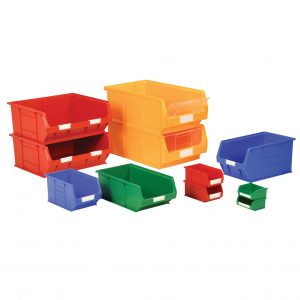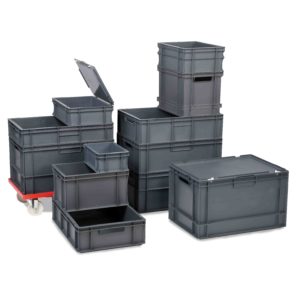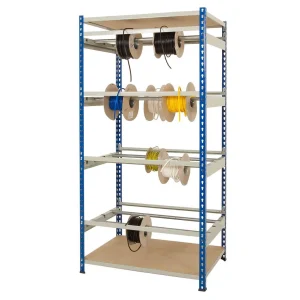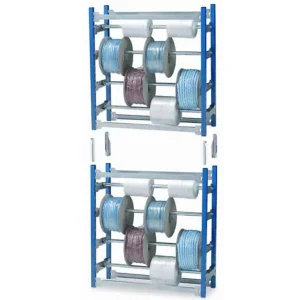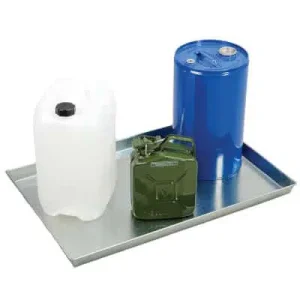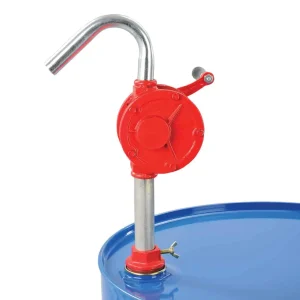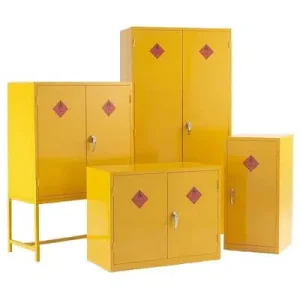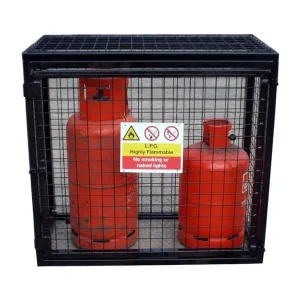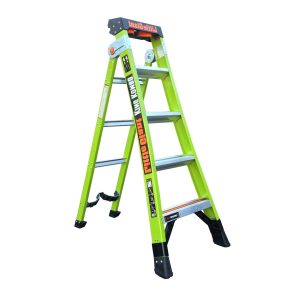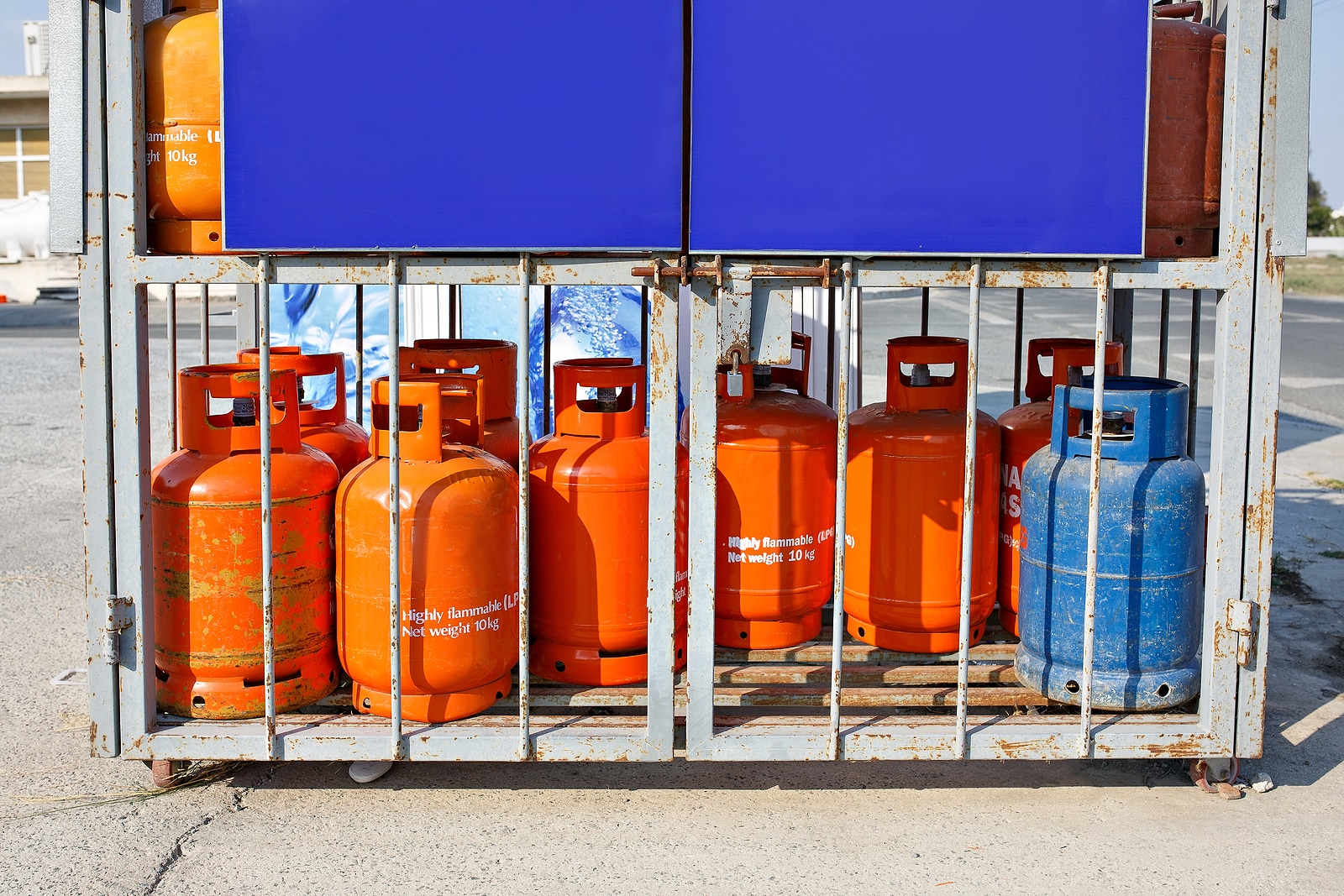
A range of flammable and toxic chemicals are often stored and transported in drums and cylinders and if they are not stored safely, could lead to serious problems.
Cylinder storage signs are warning messages mounted in potentially hazardous areas to create awareness that cylinders containing flammable gases and compressed air are being stored. Signage of gas cylinders is legally required and is included in workplace risk assessments. The Health and Safety (HSE) signs and signals regulations state that all cylinder storage signs must be legible and clear to all. Signage must be used to identify environments where harmful and flammable substances are being stored.
The Potential Hazards of Gas Cylinders
Gas cylinders present a number of different hazards that need to be signed for health and safety, these include:
- Handling and Falling Hazards: Gas cylinders are typically heavy and can be unstable due to their shape and size. Larger cylinders can weigh over 100kg when they are full and can easily topple over when not transported correctly. This means when they are not stored and handled with care, they can fall and cause serious injury.
- Pressure Hazards: Gas cylinders contain significant pressure. Any pressure above the atmospheric level can cause serious injury to personnel or property when released. This is true of both full and empty cylinders.
- Gas Leaks: Gas leaks can lead to serious health and safety concerns for nearby people and the local environment.
Legal and Permit Requirements for Gas Cylinder Storage
It is important to remember that consent from your local authority may be necessary in order to store quantities of dangerous substances over certain thresholds. The regulations contain individual thresholds for both named substances, such as hydrogen and oxygen, and for categories of substances such as flammable and toxic.

Gas Cylinder Storage Sign Regulations
Safety signs are set out under EN ISO 7010, with strict rules about colours, fonts, and sizes, intended to make a globally recognisable collection of safety signs. Here are the regular layouts of these signs relevant to gas cylinder storage:
- Mandatory Signs: These signs can cover clothing that must be worn or other protective actions that must be taken. They will be circular with white shapes displayed on a blue background.
- Prohibition Signs: These are easily recognisable signs with crossed-out red circles over a black picture. They make clear that certain actions or items are prohibited within an area.
- Hazard Warning Signs: These will be yellow triangles with a black outline and central image, making readers aware of hazards within an area such as flammable materials (for example LPG cylinders).
Alongside standard designs, custom safety signs can be ordered, laying out instructions with green, red, blue, or yellow backgrounds. Signs for protective equipment may also be required. These will be blue in colour and can make clear the need for protective glasses, shoes, or gloves.
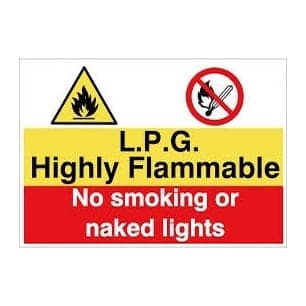
What Gas Cylinder Storage Signs Should You Use?
The following signage codes of practice are taken from the British Compressed Gases Association. Every area where gas cylinders are stored must be declared a no-smoking area, with signs indicating this. Alongside “No Smoking” signs, the following signs can be displayed:
- No Naked Lights
- No Sources of Ignition
- No Access For Unauthorised Persons
- No Mobile Phones or Other Electronic Devices
- No Storage of Oil, Grease or Combustible Materials
There are also specific signs available for certain gases, shown below:
- For Inert Gases: Asphyxiation Hazard
- For Flammable Gases: Flammable Gas and Asphyxiation Hazard
- For Oxidising Gases: Oxidising Gas
- For Toxic Gases: Toxic Gas and Asphyxiation Hazard
- For Corrosive Gases: Corrosive Gas and Asphyxiation Hazard
In cases where the contents of a gas cylinder are unclear, they will need to be quarantined and the supplier will need to be contacted. In this case, a sign reading “Gas Cylinder Quarantine Area” should be used.
There are specific dangers when storing acetylene, and it will react differently from other gases when exposed to a fire. If acetylene is being stored among your cylinders, you should install signs declaring this outside the storage, to make the fire service aware of its presence.
Site Specific Requirements
The specific safety protocols of your site should also be displayed to assist those in the event of an emergency. This notice should be displayed at a control point and include:
- The actions someone should take in the event of an emergency
- Contact details for the site operator
- Emergency contact numbers for either the gas supplier or site operator
- Phone numbers for emergency services

Quality Gas Cylinder Storage and Transport Equipment
Alongside signage, proper storage and transport of your gas cylinders is crucial to ensure site safety and comply with regulations. We offer an extensive range of quality storage solutions delivered across the UK for guaranteed low prices.
Whether you’re looking for gas cylinder handling equipment to safely move various gas cylinders around a site, gas cages to securely store potentially dangerous products, or a range of gas cylinder pallets, you’ll find it all on our site, all with a lowest price promise. Contact our team with any questions today.
